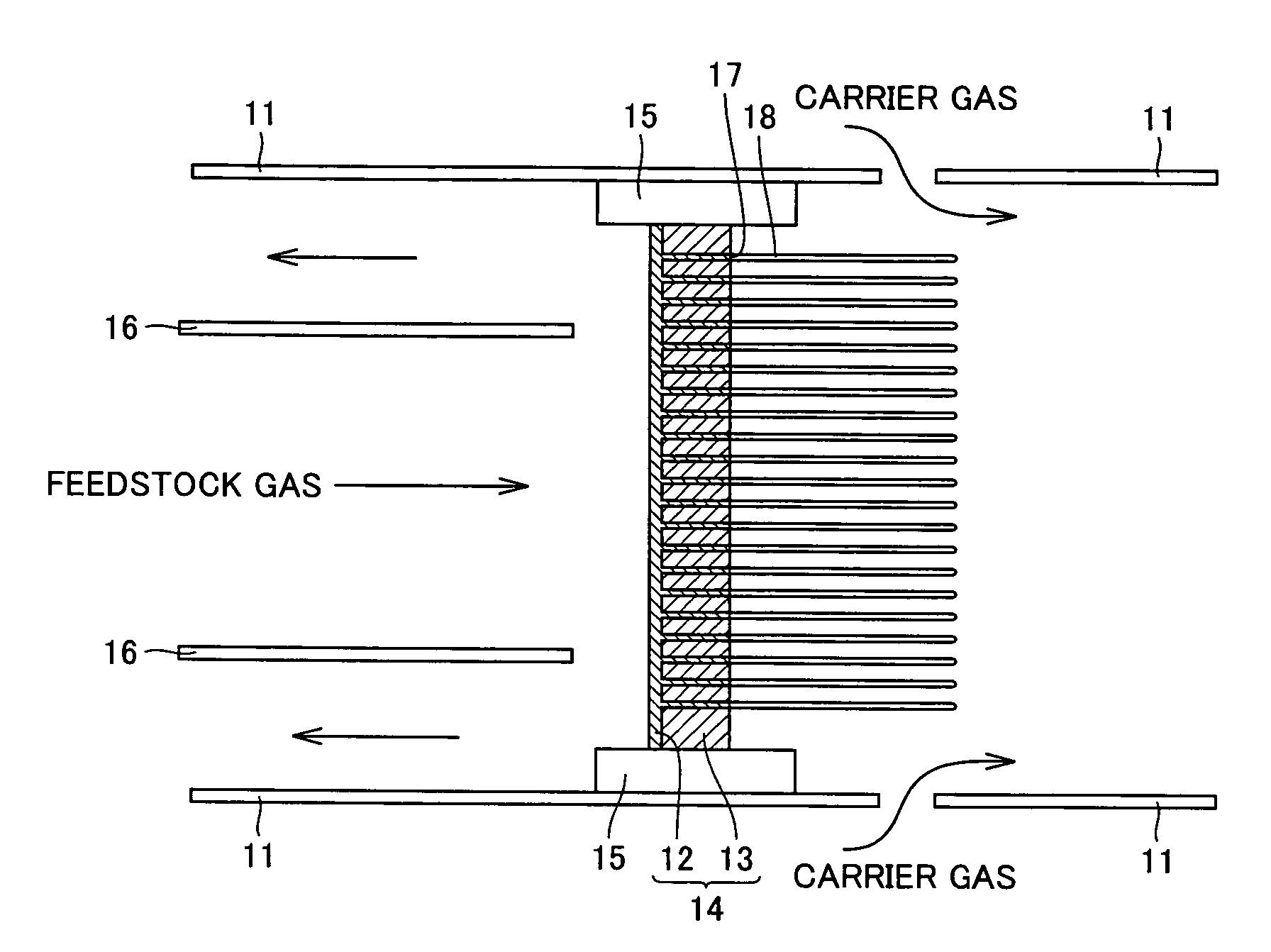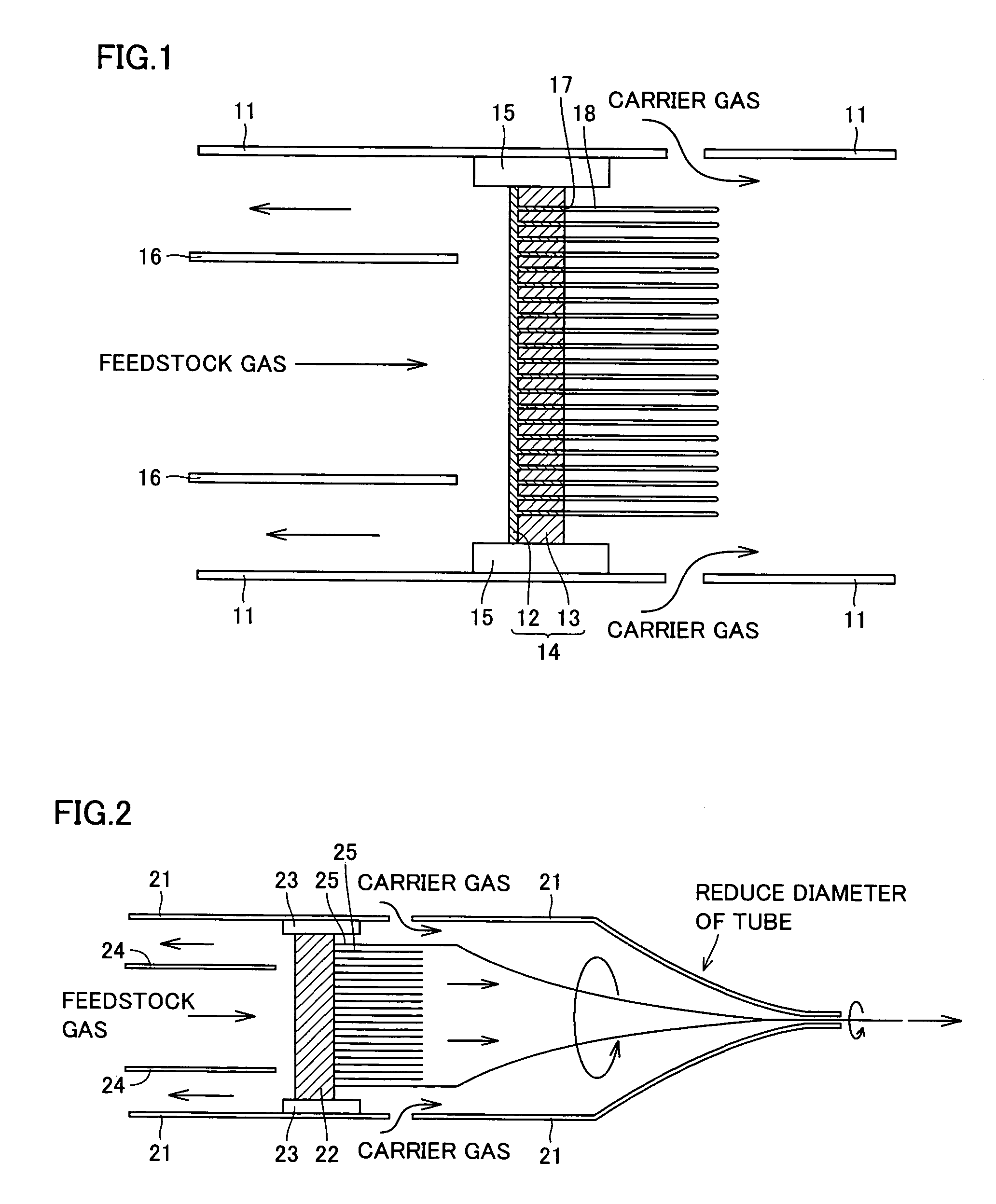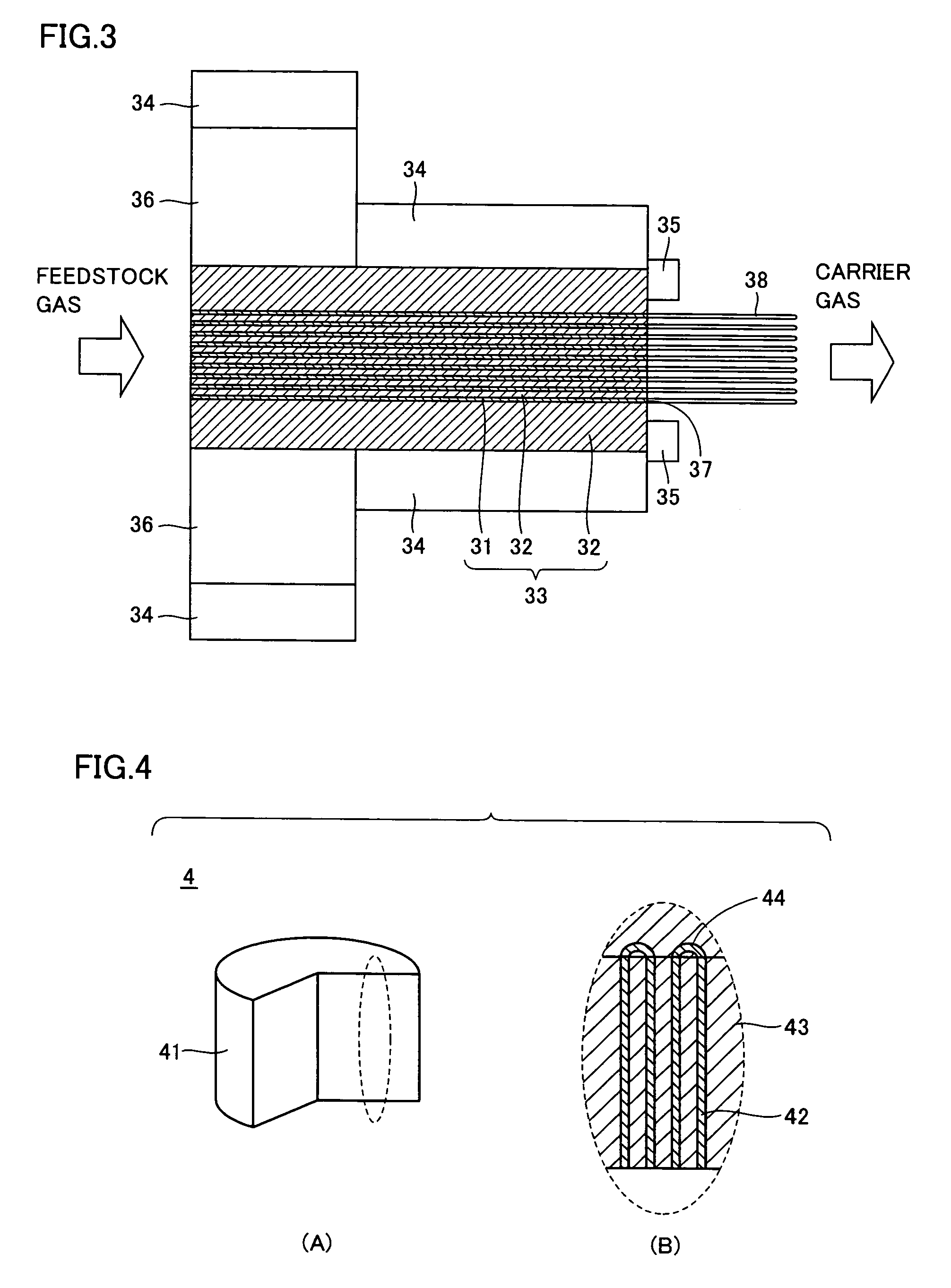Method of manufacturing carbon nanostructure
a carbon nanotube and manufacturing method technology, applied in the direction of physical/chemical process catalysts, metal/metal-oxide/metal-hydroxide catalysts, crystal growth processes, etc., can solve the problems of difficult control of the shape of the catalyst particles, difficult to manufacture uniform carbon nanotubes in a stable manner, and cause variation in morphology. , to achieve the effect of uniform shape, high purity and stable manner
- Summary
- Abstract
- Description
- Claims
- Application Information
AI Technical Summary
Benefits of technology
Problems solved by technology
Method used
Image
Examples
example 1
[0096](1) Fabrication of Catalytic Base
[0097]An Fe (iron) pipe with an outer diameter of 40 mm and an inner diameter of 30 mm was inserted into an Ag (silver) pipe with an outer diameter of 60 mm and an inner diameter of 40 mm, and an Ag rod with an outer diameter of 30 mm was inserted into the Fe pipe. The combined metal material underwent wiredrawing until it had an outer diameter of 1.2 mm to provide a wire 1.
[0098]Wire 1 was cut into segments each with a length of 1 meter which were then bundled together, with which an Ag pipe with an outer diameter of 60 mm and an inner diameter of 50 mm was filled. The resulting material underwent wiredrawing until it had an outer diameter of 1.2 mm to provide a wire 2.
[0099]The step of producing wire 2 from wire 1 was repeated to ultimately provide an assembly that has a diameter of about 12 mm and that is made of a plurality of catalyst structures bundled together having Fe with an outer diameter of about 8 nm and an inner diameter of about ...
example 2
[0108](1) Fabrication of Catalytic Base
[0109]An Fe—Co (iron-cobalt) alloy pipe with an outer diameter of 50 mm and an inner diameter of 40 mm was inserted into a Ag—Pd (silver-palladium) alloy pipe with an outer diameter of 60 mm and an inner diameter of 50 mm, and an Ag—Pd alloy rod with an outer diameter of about 40 mm was inserted into the Fe—Co alloy pipe. The combined metal material underwent wiredrawing until it had an outer diameter of 1.2 mm to provide a wire 1.
[0110]Wire 1 was cut into segments each with a length of 1 meter which were then bundled together, with which an Ag—Pd alloy pipe with an outer diameter of 60 mm and an inner diameter of 50 mm was filled. The resulting material underwent wiredrawing until it had an outer diameter of 1.2 mm to provide a wire 2.
[0111]The step of producing wire 2 from wire 1 was repeated to ultimately provide an assembly that has a diameter of about 12 mm and that is made of a plurality of catalyst structures bundled together having Fe—C...
example 3
[0121](1) Fabrication of Catalytic Base
[0122]An Fe—Co—Mo (iron-cobalt-molybdenum) alloy pipe with an outer diameter of 30 mm and an inner diameter of 20 mm was inserted into an Ag (silver) pipe with an outer diameter of 50 mm and an inner diameter of 30 mm, and an Ag pipe with an outer diameter of about 20 mm was inserted into the Fe—Co—Mo alloy pipe. The combined metal material underwent wiredrawing until it had an outer diameter of 1.2 mm to provide a wire 1.
[0123]Wire 1 was cut into segments each with a length of 1 meter which were then bundled together, with which an Ag pipe with an outer diameter of 50 mm and an inner diameter of 40 mm was filled. The resulting material underwent wiredrawing until it had an outer diameter of 1.2 mm to provide a wire 2. The step of producing wire 2 from wire 1 was repeated to ultimately provide an assembly that has a diameter of about 12 mm and that is made of a plurality of catalyst structures bundled together having Fe—Co—Mo with an outer diam...
PUM
| Property | Measurement | Unit |
|---|---|---|
| temperature | aaaaa | aaaaa |
| temperature | aaaaa | aaaaa |
| outer diameter | aaaaa | aaaaa |
Abstract
Description
Claims
Application Information
 Login to View More
Login to View More - R&D
- Intellectual Property
- Life Sciences
- Materials
- Tech Scout
- Unparalleled Data Quality
- Higher Quality Content
- 60% Fewer Hallucinations
Browse by: Latest US Patents, China's latest patents, Technical Efficacy Thesaurus, Application Domain, Technology Topic, Popular Technical Reports.
© 2025 PatSnap. All rights reserved.Legal|Privacy policy|Modern Slavery Act Transparency Statement|Sitemap|About US| Contact US: help@patsnap.com



